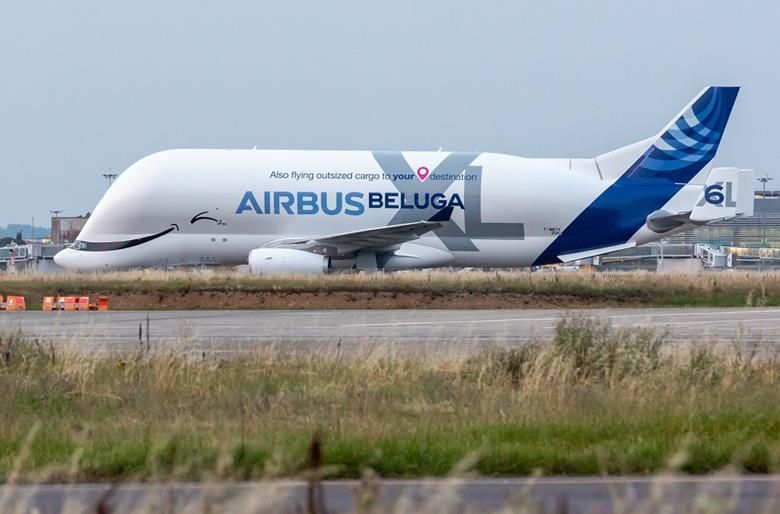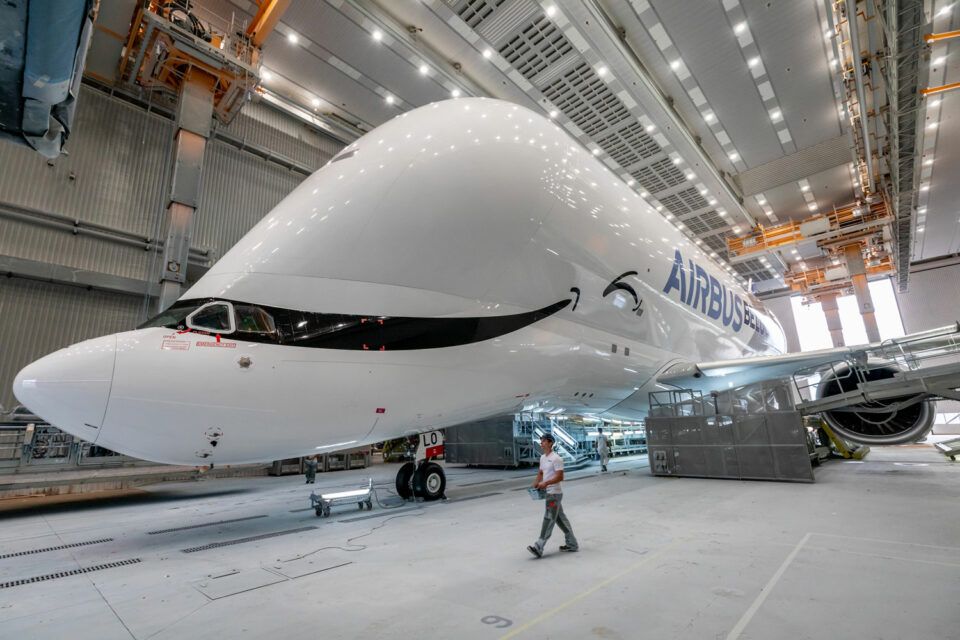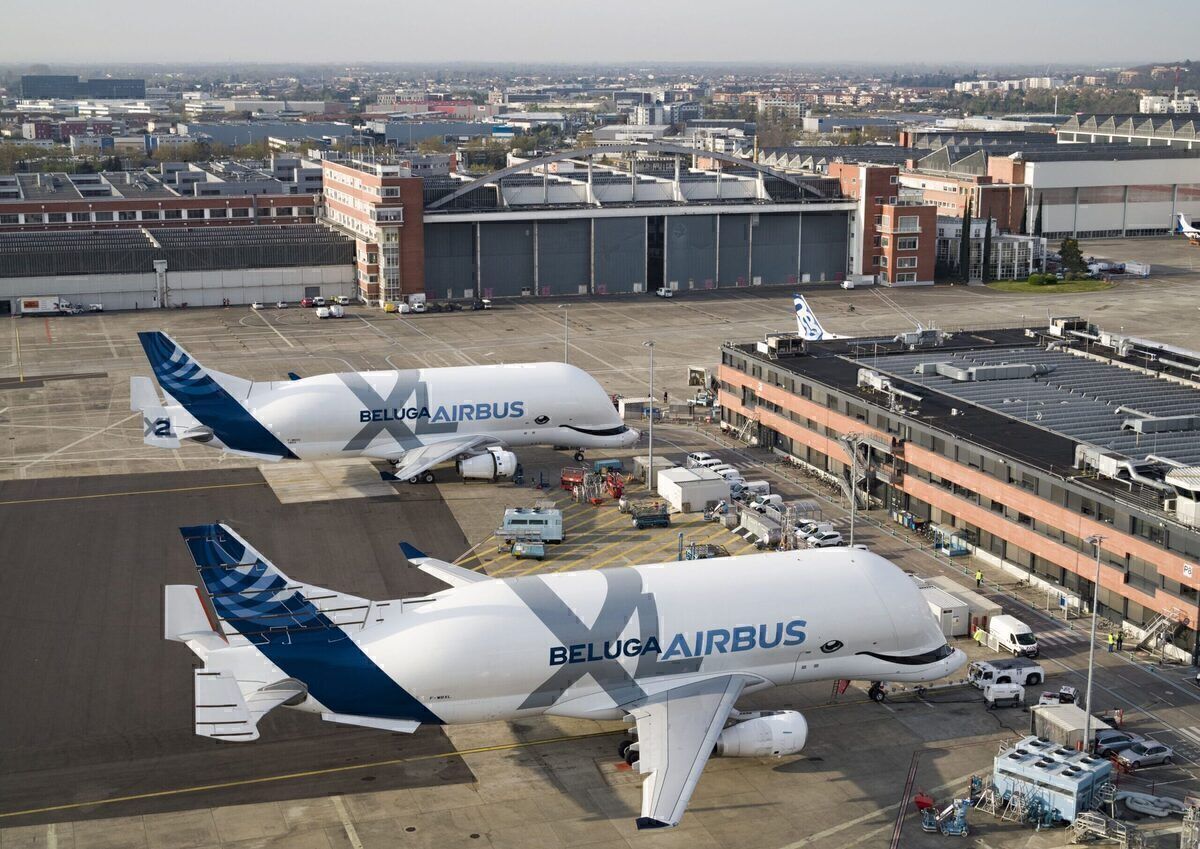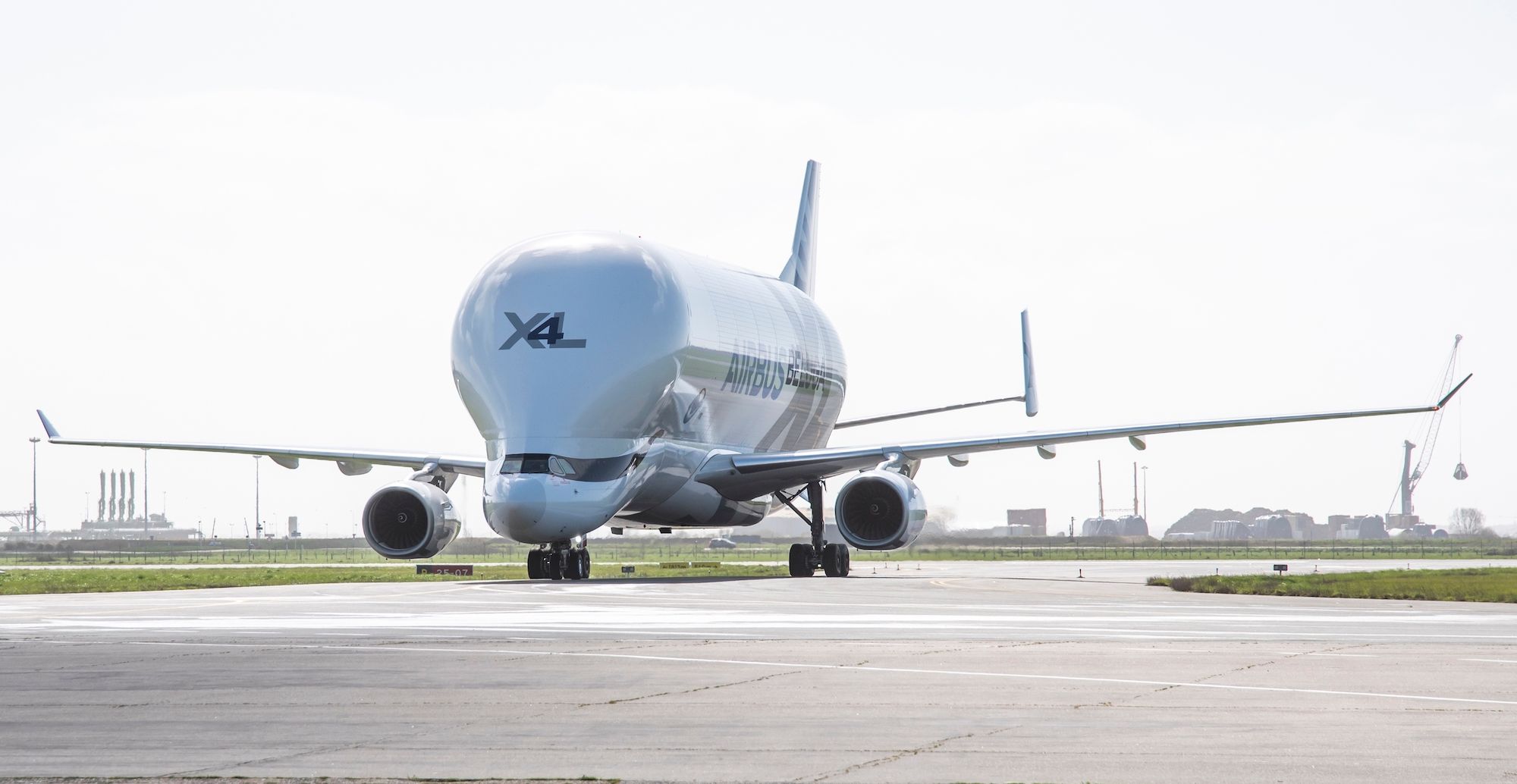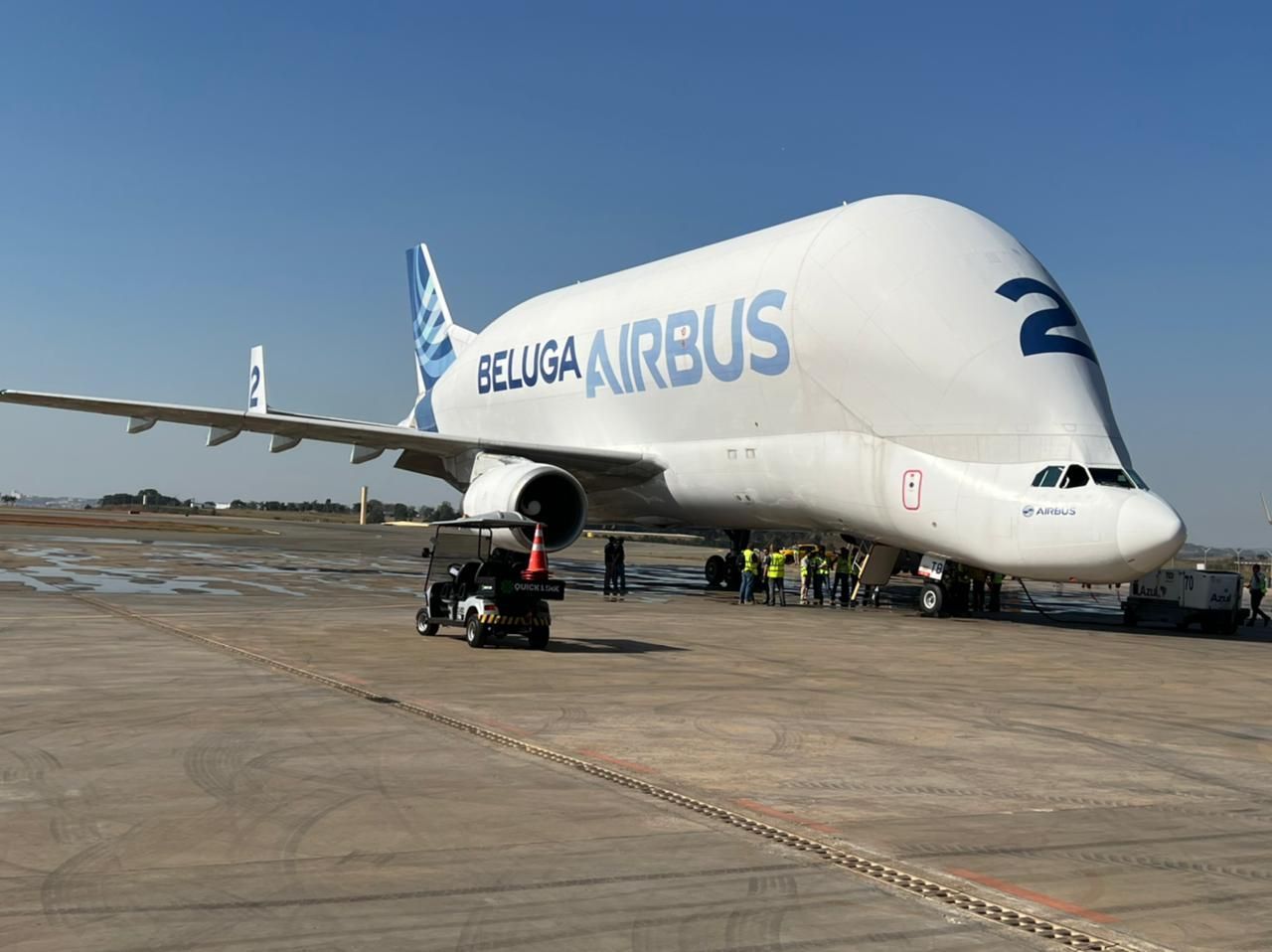Airbus has rolled out what it says will be the sixth and final Beluga XL freighter at its plant in Toulouse, France. Based on the A330-200 and featuring a special livery design, the aircraft joins five similar planes helping the manufacturer to keep up with production schedules at its plants worldwide.
The final super transporter
After a production run of just six planes, the last Airbus Beluga XL 'super transporter' freighter has been rolled out at the manufacturer's assembly plant in Toulouse, France.
While the existing five current Beluga XL aircraft feature the same livery except for their fleet numbers (1-5), the sixth and final aircraft features a subtly revised external color scheme compared to its sister ships.
This latest aircraft features the standard livery components of the Airbus' house tail colors and logo plus 'Airbus Beluga XL' fuselage titles as seen on the other five planes. But additionally, this newest plane also carries large 'Also flying outsize cargo to your destination' titles and features a customized 'winking eye' motif on the left side of the forward fuselage.
Beluga XL number 6 is currently preparing for its first flight, which is due to take place in the coming days. The aircraft is expected to enter service in the second half of 2023.
What is the Beluga XL?
Based on the Airbus A330-200 airliner platform, the Beluga XL (formally designated as the A330-700L) is the successor to Airbus' Beluga ST transporter that was designed to transport aircraft components between Airbus factories and assembly plants located across Europe.
The Beluga XL program was officially launched in November 2014 to meet changes in the logistical transport requirements of Airbus. The manufacturer already operated five Beluga STs in this role (based on the A300-600) but required an aircraft with even greater payload capability to carry bigger wings and other components as the Airbus family of civil aircraft has developed over time.
The Beluga XL had its maiden flight five years ago this month (July 2018) and entered service with Airbus Transport International (ATI), the European aerospace group's logistics division) in February 2021.
Before using the Beluga STs, Airbus performed the task with a fleet of four Super Guppies - a four-engine turboprop freighter that Boeing originally developed in the 1960s. These were replaced with the Beluga ST due to their limited cargo capability, which in turn are being replaced by the Beluga XL fleet.
Beluga XL - Unmatched capabilities
Sized at 23 ft (seven meters) longer and 3.3 ft (one meter) wider than its Beluga ST predecessor, the latest incarnation of the Airbus super transporter has a load capacity 30% higher than the Beluga ST. Thanks to new efficiency in loading systems, the turn-around time for the Beluga XL is approximately 1 hour, reduced by almost half compared to a Beluga ST.
With a fuselage length of 207 ft (63 meters) and a width of 29 ft (8.8 meters), plus a cabin height of 24.6 ft (7.5 meters), the aircraft's unique design provides a large cargo door located above the flight deck which facilitates the loading of entire wings and large sections of fuselage into its voluminous cargo compartment which runs from nose to tail.
Keep up with all the latest European aviation news with Simple Flying.
The Beluga XLs capacious cargo hold measures 7,247 cubic ft (2,209 cubic meters), the largest among all civil or military aircraft currently in service worldwide.
According to Airbus, the Beluga XL can carry two completed wings of the A350 XWB, while the Beluga ST could only manage one. With a maximum payload of 51 tonnes, the Beluga XL freighter has a range of 4,000 km (2,200NM). All six Beluga XL aircraft are fitted with Rolls-Royce Trent 700 engines.
Joining a busy worldwide fleet
The sixth and final Beluga XL will soon take up its role within the ATI fleet, which currently operates between 11 European destinations. The Beluga XLs are gradually replacing the existing five-member-strong Beluga ST fleet, which will be retired from operations transporting Airbus airplane components.
However, this will not be the end of the line for the Beluga ST fleet. The planes are being gradually phased into another operational division of ATI - Airbus Beluga Transport (AiBT). Created in July 2022, AiBT is responsible for operating the five Beluga STs under its own Air Operators Certificate (AOC).
While operations of AiBT have so far focused on missions for other Airbus divisions (such as the space and helicopters divisions), according to Airbus, AiBT aims to take on an increasing proportion of external commercial customers as the Beluga XLs take over the primary role of transporting commercial airplane components for Airbus.
In February of this year, Reza Fazlollahi, Head of Sales at AiBT, stated that AiBT had already filled almost 50% of its slots for the rest of 2023, including many requests for outsize cargo transportation missions worldwide.
Sources: Airbus, Flightglobal,

